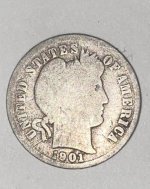Martin_V3i
Elite Member
I am prone to be in the "discriminate everything below 19" club. I only have so much stamina and time, and my super slim chances of finding any lost gold in local public dirt, not beaches? Well, next to impossible, so why waste my time and physical energy to find one gold piece of gold jewelry that will likely cost me week(s) of time, while the lower disc #s simply demean me with beavertails, pull tabs and chewed up aluminum cans? I will use the horseshoe in playgrounds, soccer fields, volleyball courts. Otherwise my lowest Vdi numbers when hunting "blindly" will only be 12-13. A single 13 number gets me enough nickels and an odd weeding band. All those other teen numbers are a simple nag mostly.
Now, give me a report of a lost ring and any description of it at all, and I will open the screen up a lot. Otherwise, I am basically a high conductor coinshooter all of the time.
Tons of new people get into metal detecting "looking for the gold", and they quickly find a spot in the closet for a new machine. Kudos to y'all who work and dig all the trash, and do actually find some gold. Maybe it's location, location, location but here? The aluminum trash will kill your stamina. Jm2c
But, we are digressing from the original topic on higher Vdi numbers. I get them to, especially in ultra dry soil conditions. Numbers seem to be more stable in Multi mode, and highest in 4 & 5 kHz. It's just a shot in the dark but with the air waves being filled with more Rf frequencies, 5G being a biggie, I don't doubt that the Equinox isn't maybe losing it's handling ability of Vdi accuracy.
The 5G rollout may add many interesting things in time.
Now, give me a report of a lost ring and any description of it at all, and I will open the screen up a lot. Otherwise, I am basically a high conductor coinshooter all of the time.
Tons of new people get into metal detecting "looking for the gold", and they quickly find a spot in the closet for a new machine. Kudos to y'all who work and dig all the trash, and do actually find some gold. Maybe it's location, location, location but here? The aluminum trash will kill your stamina. Jm2c
But, we are digressing from the original topic on higher Vdi numbers. I get them to, especially in ultra dry soil conditions. Numbers seem to be more stable in Multi mode, and highest in 4 & 5 kHz. It's just a shot in the dark but with the air waves being filled with more Rf frequencies, 5G being a biggie, I don't doubt that the Equinox isn't maybe losing it's handling ability of Vdi accuracy.
The 5G rollout may add many interesting things in time.
Last edited:


